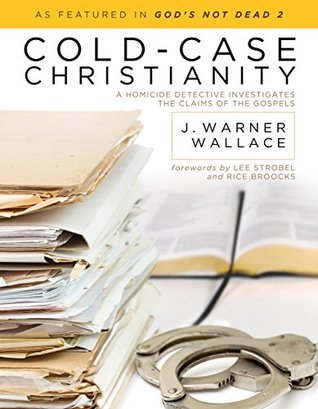More on this book
Community
Kindle Notes & Highlights
Read between
July 24 - October 21, 2018
All of us hold presuppositions that can impact the way we see the world around us.
Philosophical naturalism rejects the existence of supernatural agents, powers, beings, or realities. It begins with the foundational premise that natural laws and forces alone can account for every phenomenon under examination.
When we smuggle our conclusions into our investigation by beginning with them as an initial premise, we are likely to beg the question and end up with conclusions that match our presuppositions rather than reflect the truth of the matter.
This is the truest definition of bias, isn’t it? Starting off with your mind already made up.
The question is not whether or not we have ideas, opinions, or preexisting points of view; the question is whether or not we will allow these perspectives to prevent us from examining the evidence objectively.
Everyone begins with a collection of biases. We must (to the best of our ability) resist the temptation to allow our biases to eliminate certain forms of evidence (and therefore certain conclusions) before we even begin the investigation.
When I was an atheist, I allowed the presupposition of naturalism to unfairly taint the way I looked at the evidence for God’s existence. I failed to differentiate between science (the systematic, rational examination of phenomena) and scientism (the refusal to consider anything other than natural causes).
I am hesitant to embrace any theory that requires the conspiratorial effort of a large number of people, over a significant period of time, when there is personally little or nothing to gain by their effort.
But if you think about it, faith is actually the opposite of unbelief, not reason. As I began to read through the Bible as a skeptic, I came to understand that the biblical definition of faith is a well-placed and reasonable inference based on evidence.
In a similar way, the circumstantial evidence in our universe is consistent with God’s existence and involvement as the uncaused first cause, the fine-tuner, the designer, and the moral lawgiver required to account for all the evidence we observe.
As the circumstantial case against Ron grew, the likelihood of his guilt also grew. As the circumstantial case for God grows, the likelihood of His existence also grows. If the evidence for Ron’s guilt is compelling enough to reasonably conclude that he is guilty, the evidence for God’s existence is compelling enough to reasonably conclude that He exists.
The Martyrdom Traditions of the Apostles Andrew was crucified in Patras, Greece. Bartholomew (aka Nathanael) was flayed to death with a whip in Armenia. James the Just was thrown from the temple and then beaten to death in Jerusalem. James the Greater was beheaded in Jerusalem. John died in exile on the island of Patmos. Luke was hanged in Greece. Mark was dragged by horse until he died in Alexandria, Egypt. Matthew was killed by a sword in Ethiopia. Matthias was stoned and then beheaded in Jerusalem. Peter was crucified upside down in Rome. Philip was crucified in Phrygia. Thomas was stabbed
...more


